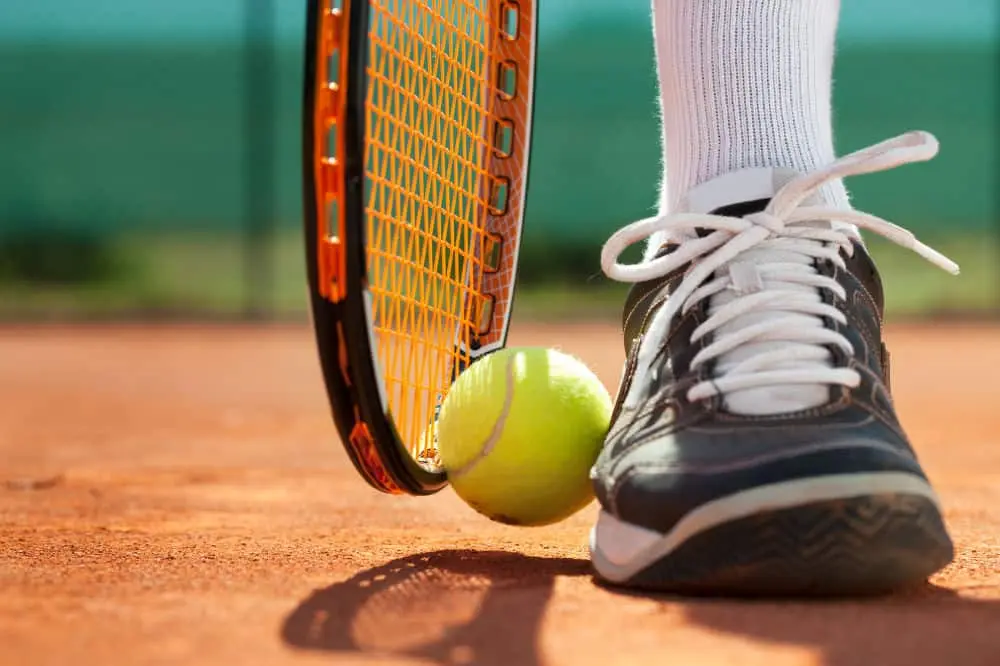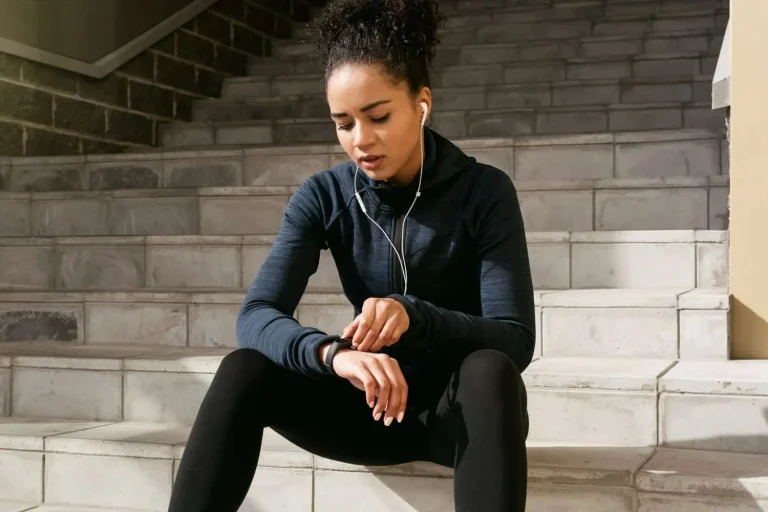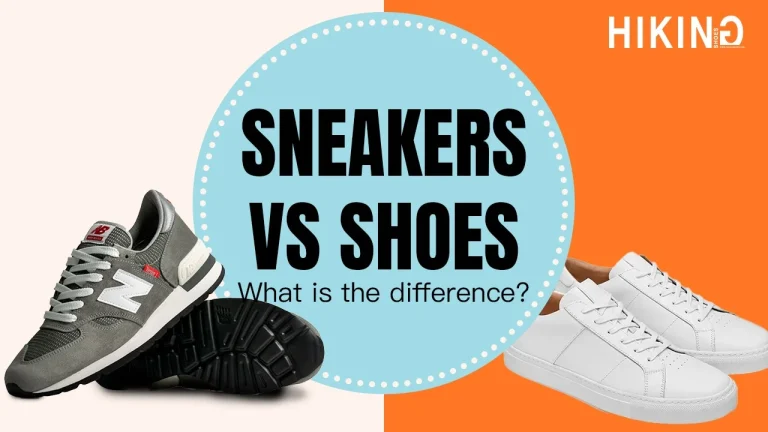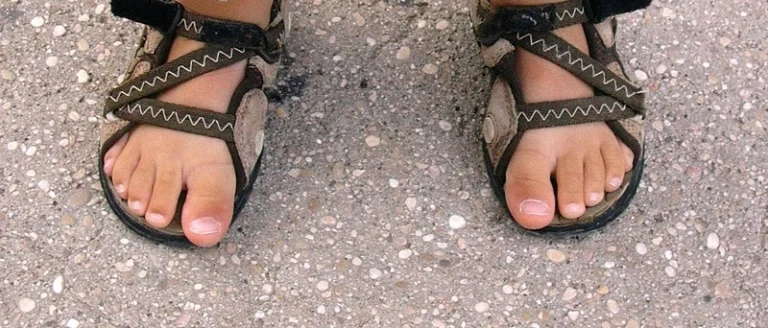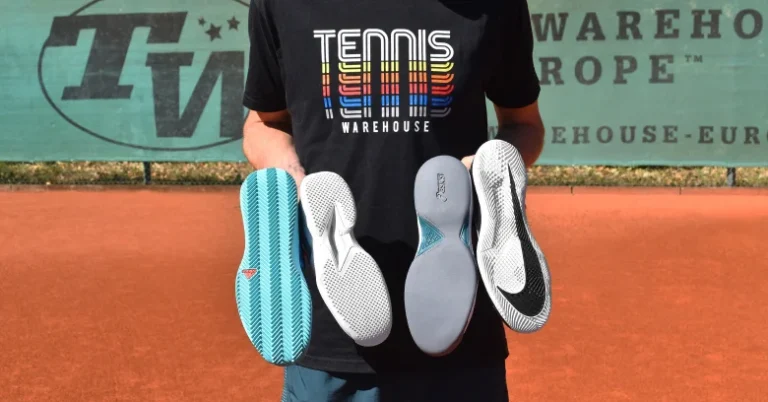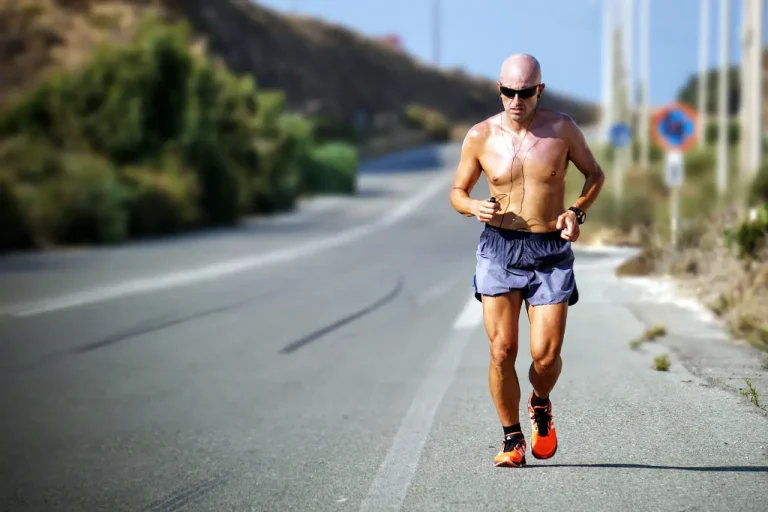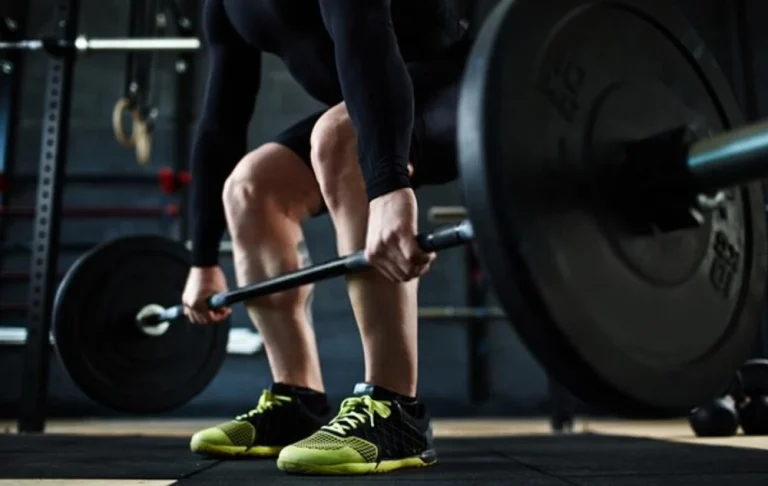Do You Need Special Shoes For Tennis?
Introduction of this article:
Tennis is a sport that involves quick movements, sudden stops, and pivoting, placing unique demands on the feet and joints. Wearing the right footwear is crucial to ensure optimal performance, minimize the risk of injuries, and provide the necessary support and stability on the court. In this guide you will learn do you need special shoes for tennis?
This article aims to address the question of whether special shoes are necessary for playing tennis. We will examine the unique demands of the sport, the benefits of tennis-specific shoes, the potential risks of using improper footwear, and factors to consider when choosing tennis shoes. By understanding the importance of proper footwear in tennis, players can make informed decisions to enhance their performance and protect their feet during play.
The unique demands of tennis
The unique demands of tennis
Tennis places unique demands on the feet and requires footwear that can withstand these demands. Specialized tennis shoes are designed to address these specific needs. Which providing the necessary support, stability, traction, and cushioning to enhance performance and protect against injuries.
Benefits of tennis specific shoes
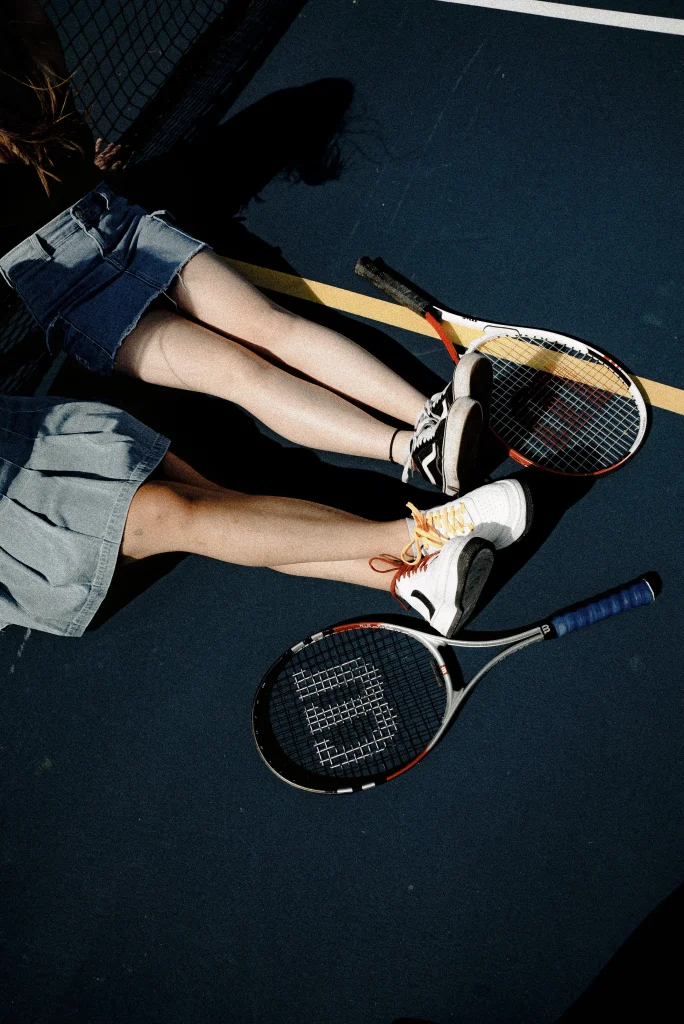
By wearing tennis-specific shoes, players can benefit from the enhanced stability, improved traction, cushioning, and durability that these shoes provide.
Related To: Best Volleyball Shoes For Spikers
Related To: Best Women’s Clay Court Tennis Shoes
Running shoes are just as good as tennis shoes
While running shoes may share some similarities with tennis shoes, it is important to note that they are designed for different purposes and have distinct features that cater to the specific demands of each sport. While running shoes prioritize forward motion and cushioning for repetitive linear movements, tennis shoes are specifically engineered to provide lateral stability, traction on court surfaces, and durability to withstand the rigorous movements and abrasion on the court. Tennis shoes have reinforced sides, supportive uppers, and specific tread patterns to enhance stability, prevent ankle injuries, and provide optimal traction on different court surfaces.
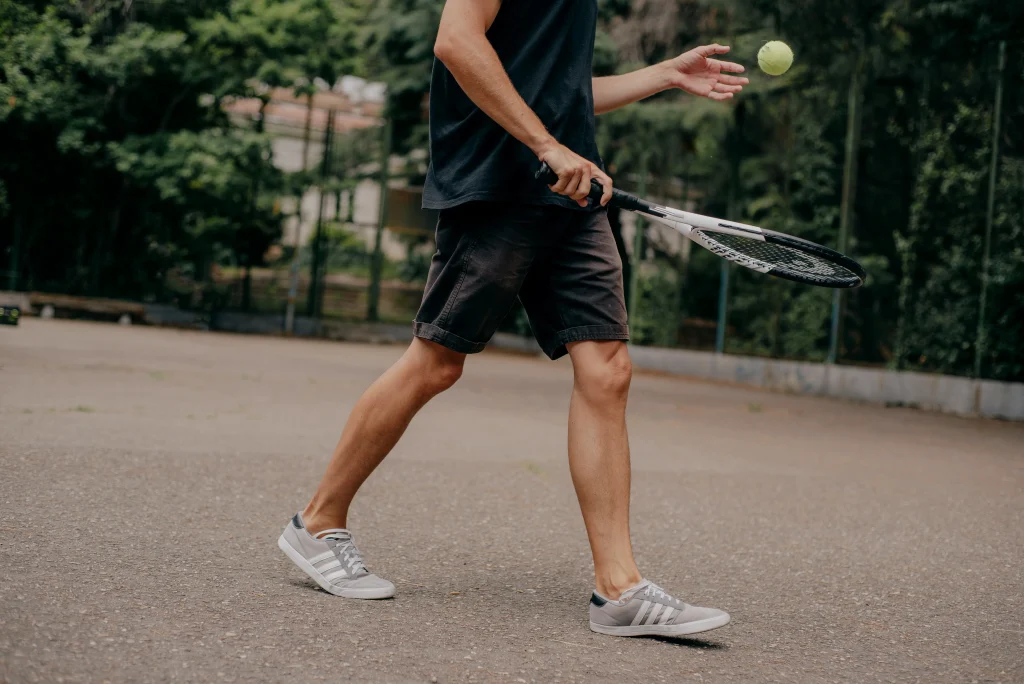
They also offer cushioning and support in areas like the midsole, arch, and heel to absorb shock and reduce the risk of injuries during quick movements and sudden stops. While running shoes may be comfortable, they may not offer the same level of lateral stability, traction, and durability needed for the specific demands of tennis. Therefore, for serious tennis players, wearing tennis-specific shoes is generally recommend to optimize performance and reduce the risk of injuries.
Potential risks of using improper footwear
Potential risks of using improper footwear
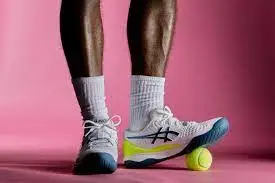
Increased risk of injuries
Lack of stability: Improper footwear may not provide the necessary stability and support needed for the quick lateral movements, pivoting, and direction changes in tennis. This can increase the risk of ankle sprains, twists, and other foot and ankle injuries.
Insufficient cushioning: Inadequate cushioning in the midsole can lead to increased impact on the joints, potentially causing stress fractures, shin splints, and other overuse injuries.
Poor traction: Improper footwear may lack the appropriate traction on different court surfaces, increasing the risk of slipping and falls.
Reduced performance and comfort on the court
Lack of lateral support: Insufficient lateral support can affect stability and hinder quick movements, compromising performance on the court.
Discomfort and pain: Ill-fitting or unsuitable shoes can cause discomfort, blisters, and foot pain, distracting players and affecting their focus and performance.
Using improper footwear in tennis can have serious consequences, including an increased risk of injuries and a negative impact on performance and comfort. It is essential to wear tennis-specific shoes that provide the necessary stability, support, cushioning, and traction. To minimize these risks and optimize performance on the court.
Factors to consider when choosing tennis shoes
When choosing tennis shoes, there are several factors to consider:
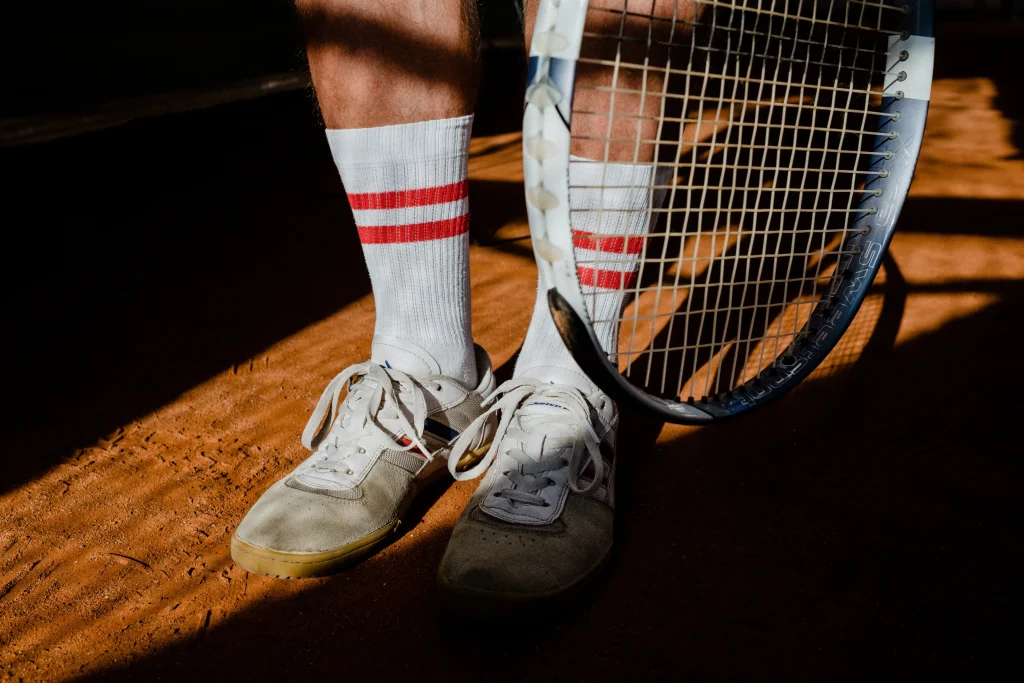
Court Surface
Different court surfaces require different types of tennis shoes. Hard courts, clay courts, and grass courts each have specific shoe requirements to provide the right traction and support.
Foot Type
Consider your foot type, such as whether you have high arches, flat feet, or neutral arches. This will help you find shoes that provide the appropriate level of support and stability.
Cushioning and Support
Look for tennis shoes that offer adequate cushioning to absorb impact and provide comfort during long matches. Additionally, consider the level of support the shoes offer, especially around the ankles and midfoot.
Fit and Size
Proper fit is crucial for tennis shoes. Ensure that the shoes fit snugly but not too tight, allowing for some wiggle room for your toes. It’s recommend to try on shoes and walk around in them to assess the fit before making a purchase.
Durability
Tennis shoes should be durable enough to withstand the demands of the sport. Look for shoes made from high-quality materials that can handle frequent lateral movements and provide long-lasting performance.
Weight
Consider the weight of the shoes. Lighter shoes can provide greater agility and speed, while heavier shoes may offer more stability and support.
Brand and Price
Different brands offer various features and technologies. Research different brands and read reviews to find a reputable brand that suits your needs. Additionally, consider your budget and find shoes that offer a good balance between quality and price.
Conclusion
In, wearing special shoes design specifically for tennis is highly recommended. Regular athletic shoes or running shoes may not provide the necessary support, stability, and traction required for the sport. Tennis shoes are specifically designed to cater to the demands of tennis. With features such as lateral support, cushioning, and durable outsoles with court-specific patterns.

